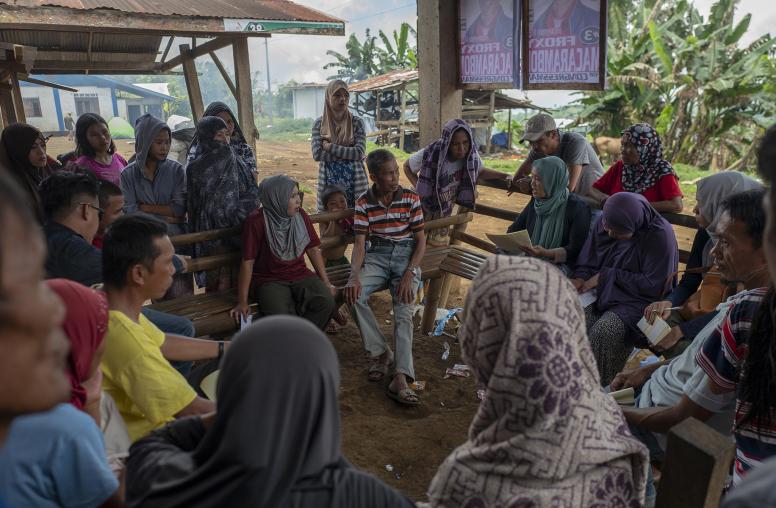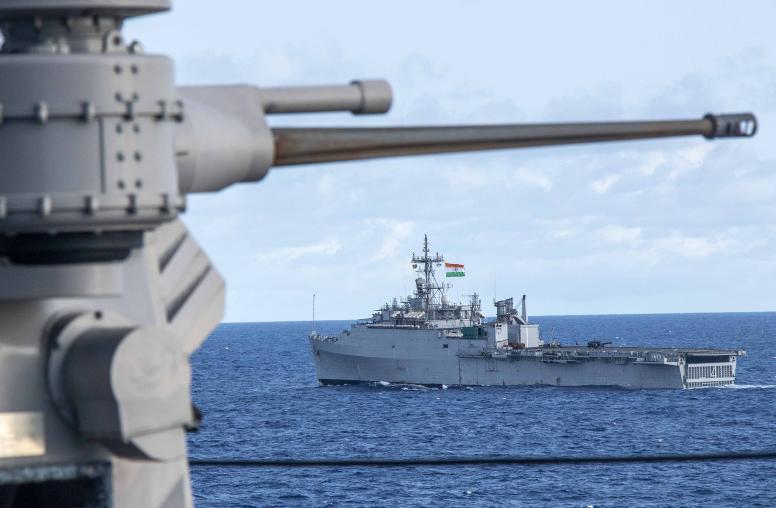Justification of War
When is war justified? The teaching guide on the justification of war, helps teachers address this age-old question with their students. Through use of the guide, students explore the causes of war, apply the principles of a just war to modern conflicts, analyze how leaders justify wars, and develop an editorial position on the justness of a conflict.

Teaching Guide on the Justification of War
When is war justified? The Teaching Guide on the Justification of War, intended for grades 9-12, helps teachers address this age-old question with their students. Through use of the guide, students explore the causes of war, apply the principles of a just war to modern conflicts, analyze how leaders justify wars, and develop an editorial position on the justness of a conflict.
Objectives of the Teaching Guide:
- To increase students' understanding of war and peace
- To increase students' understanding of the concept of a "just war" and the application of this concept to historic and contemporary conflicts
- To develop analytical reading, writing, and research skills
- To enable classroom teachers, students, and contest coordinators to:
- Understand the overall theme of the National Peace Essay Contest (NPEC) topic
- Define and understand concepts contained in the essay question
- Apply specific principles of a just war to several international conflicts
- Review bibliographic resources and select sources for their research
- Use primary sources to discover and evaluate the manner in which leaders justify waging war
- Analyze opposing viewpoints on the justification of war
- To assist teachers in preparing students to write essays for submission to the National Peace Essay Contest (NPEC) by providing them with lesson plans, worksheets, bibliographic sources, and factual material.
Five Lessons Are Included:
I. Introducing the National Peace Essay Contest and the 2002-2003 Question to Your Students (1/2 period)
This lesson will introduce students to the topic of the 2002-2003 NPEC contest and will set the stage for the classes that follow.
II. Understanding the Causes of War (1 period)
This lesson will provide an opportunity for students to look at the causes of war and to think about the resulting wars in terms of justness. The lesson provides students with basic information about the nature of violent conflict.
III. Applying the Principles of a Just War to Modern Conflicts and Introducing Bibliographic Resources (1-2 periods)
This lesson gives students the opportunity to look closely at the principles of a just war and to apply these principles to specific cases. The activity will help prepare students for the cases they will analyze in their essay for the NPEC.
IV. Utilizing Primary Sources to Learn How Leaders Justify Wars (1-2 periods)
This lesson presents various justifications given for war and asks students to critically analyze the nature and impact of these justifications. The lesson further prepares students for writing their essays by having them explore primary sources to evaluate the justifications.
V. Developing an Editorial Position on the Justness of a Conflict (1 period)
This lesson gives students the opportunity to analyze opposing viewpoints on the justness of war and reinforces the concepts from the previous lessons.
Download the Teaching Guide
The guides are in PDF format. To view or print them you need Adobe Acrobat. The software can be downloaded for free from Adobe's web site.
Download the National Peace Essay Contest Teaching Guide on the Justification of War (184K)
The guide includes all lessons plans, student handouts and instructions.
Related Institute Resources




